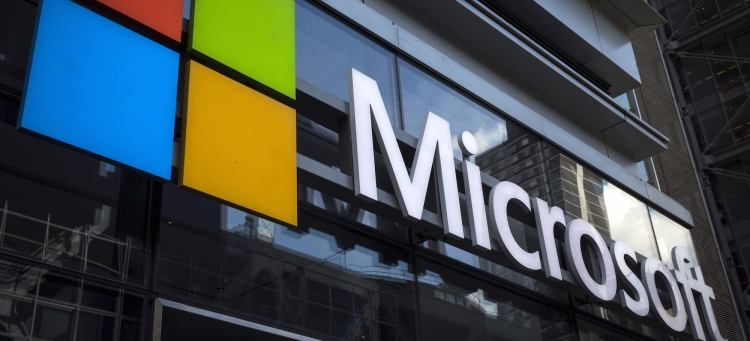Today marks the kickoff for Microsoft Connect(); 2018, Microsoft’s annual cloud- and data-focused developer conference, and the Seattle company wasted no time getting down to business. It announced the general availability of Azure Machine Learning service, a cloud platform that enables developers to build, train, and deploy AI models, and updates to Azure Cognitive Services, a collection of natural language processing, speech recognition, and computer vision APIs. And it launched a more affordable Azure Cosmos DB tier, a turnkey solution for distributed cloud-based workloads.
But that’s not all. Microsoft also took the wraps off upgrades to Azure Stream Analytics on Azure IoT Edge, which processes data from IoT solutions locally; a new and improved Azure IoT Device Simulation Solution Accelerator; improvements to Azure IoT Remote Monitoring solution accelerator and Azure Time Series Insights; and Azure Maps enhancements.
AI and Data
After a relatively lengthy preview period, Azure Machine Learning is available now to all customers with a new feature in preview: model explainability. Starting this week, customers will be able to identify which input features weighed the heaviest on an AI system’s predictions.
Launching in general availability is Azure Machine Learning’s core features, including support for AI frameworks such as PyTorch, TensorFlow, and scikit-learn; automated hyperparameter tuning; and the capability to deploy to both cloud and edge environments.
June 5th: The AI Audit in NYC
Join us next week in NYC to engage with top executive leaders, delving into strategies for auditing AI models to ensure fairness, optimal performance, and ethical compliance across diverse organizations. Secure your attendance for this exclusive invite-only event.
“We’ve received a lot of positive feedback from customers who’ve been using Azure Machine Learning,” Eric Boyd, corporate vice president at Microsoft, told VentureBeat in a phone interview. “It’s helping them to get their work done more quickly and efficiently than before, whether in the cloud or on-premises … [because] it doesn’t require you to be a data scientist to use it. [The] automated machine learning [features] help select the appropriate algorithms to use.”
New pricing is set to take effect on February 1, 2019.
Azure Cognitive Services, meanwhile, has gained two key features: (1) container support for Language Understanding and (2) custom translation. The former, which is available in early access starting today, allows Azure developers to deploy apps with object detection, vision recognition, and speech recognition on the edge, and to more easily maintain architectures across the cloud and edge. Custom translation, meanwhile, which is now generally available, lets users tap human-translated content to build a custom translation system that can better handle specific vocabulary (think jargony terms like “contingent workforce” and “deliverables”) and distinct writing styles.
Finally, as alluded to earlier, Microsoft today launched a more affordable Azure Cosmos DB offering: Azure Cosmos DB Throughput Offer. Like other Azure Cosmos DB services, Throughput Offer can automatically scale and replicate data across multiple Azure regions, but with pricing optimized for customers with multi-container databases.
Along with Throughput Offer is Azure Cosmos DB .NET SDK 3.0, CORS, which enhances Azure Cosmos DB’s existing support for .NET and JavaScript applications.
IoT
On the internet of things (IoT) side of the equation, Microsoft today made publicly available Azure Stream Analytics (ASA) on Azure IoT Edge, which simplifies the process of moving analytics between the cloud and edge devices with limited bandwidth and connectivity. Niftily, it runs within the IoT Edge framework, meaning jobs created in it can be deployed and managed using the IoT Hub.
ASA on IoT Edge launches today, following a preview that began in November 2017.
Microsoft also revealed updates to the Azure IoT Device Simulation Accelerator. Now, it’s easier to script complex device behavior (including multiple devices in a single simulation), and to run simulations that emulate real-world environments.
Those aren’t the only IoT platform updates coming down the pipeline.
Previously, IoT solution accelerators, a service which creates customized solutions for common IoT scenarios, allowed developers to manage devices, modules, and actions only within the Azure portal. But thanks to an enhanced Azure IoT Remote Monitoring user interface rolling out this week, they can now more easily trigger actions (such as email notifications) in response to device alerts, manage device updates using Automatic Device Management, and visualize device data using Azure Time Series Insights.
On the Azure Maps front, Microsoft debuted a new S1 pricing tier. It’s available alongside the Standard S0 offering and provides an enhanced service level for “production-scale” deployments of apps using Azure Maps, without a Query Per Second limitation.
Last, but not least, Microsoft launched new Time Series Insights in public preview. Azure Time Series — a full stack analytics, storage, and visualization service for time series data from IoT deployments — now lets customers more effectively store and analyze modeled and ad-hoc data. They can add rich contextualization to telemetry data, store IoT data in layers, and tap machine learning and analytics tools for insights.
Additionally, Microsoft’s introducing a new usage-based pricing model for Time Series Insights. It’s available today.


